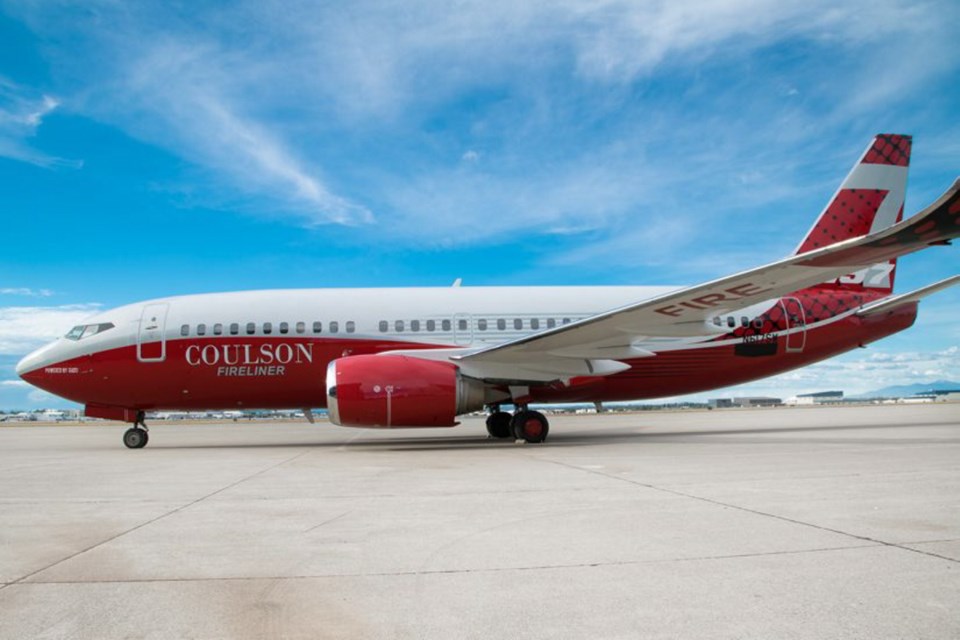A Port Alberni aviation company is turning six passenger aircraft into water bombers.
Coulson Aviation has purchased six Boeing 737-300s from Southwest Airlines and plans to convert them into “Fireliner” air tankers.
The planes will have 4,000-gallon capacity for water or retardant, plus space for 63 passengers or firefighters.
“We’ll be the only air tanker in the world that has capacity to do that. So that will give us a chunk of market share in the industry,” said Wayne Coulson, chief executive of the Coulson Group of Companies.
The first aircraft was repainted in Spokane, Washington, and arrives in Port Alberni today. Installation of the tanks begins in June and should be complete by November. After two weeks of flight tests by the U.S. Forest Service in Southern California, where the aircraft will be tested for “next generation” classification, it should be ready for service by the end of the year.
The gravity-based tanking system and retardant delivery method are also used in the company’s C-130s.
Each Fireliner costs about $7 million, Coulson said.
“The aircraft coming in tomorrow will be the first prototype with the tanking system involved. We’ve had an engineering team of 10 from across North America that we’ve imported to Port Alberni working on the tanks,” Coulson said.
“We’re now ready to start the installation in the aircraft.”
At 4,000 gallons, the Fireliner will be the largest airtanker on the market, Coulson said.
It will be appropriate for either direct or indirect attacks.
A direct attack is when an aircraft, like a helicopter, drops water directly on top of a fire.
The bulk of firefighting aircraft are now used for indirect attacks, involving dropping red retardant along a fire’s perimeter. When fire reaches the retardant, oxygen is sucked out, extinguishing the flames, allowing firefighters to work on the fireline.
The Fireliner will have a flow rate of 2,200 gallons per second.
“Our competitive advantage with both the C-130s and the Boeing 737 is the flow is so heavy that we can do direct attacks on top of the fire,” he said.
The company plans to bid on contracts in the United States, Australia, South America and Europe.
Coulson Aviation is also building a fourth C-130 in Arizona.
Coulson said he hopes that the newly elected government in British Columbia might mean more opportunity to bid on local contracts.
Most recent B.C. contracts under the Liberals have gone to the same company, Abbotsford-based Conair Aerial Firefighting.
“It’s our hope that with the new government and balance of power that we do get opportunities for our aircraft in the province of B.C.,” Coulson said.
Coulson Group of Companies also operates the Mars bombers — the largest water bombers in the world.
The Martin Mars was retired from firefighting service in 2013, but was brought back in 2015 for the forest-fire season on a $600,000 contract.
Coulson planned to sell the retired air tanker, since neither the B.C. nor Alberta governments had requested its support, but is still looking for buyers.
Its Hawaii Mars, which was damaged during the EAA AirVenture Oshkosh airshow last summer, will be air-ready in August.



